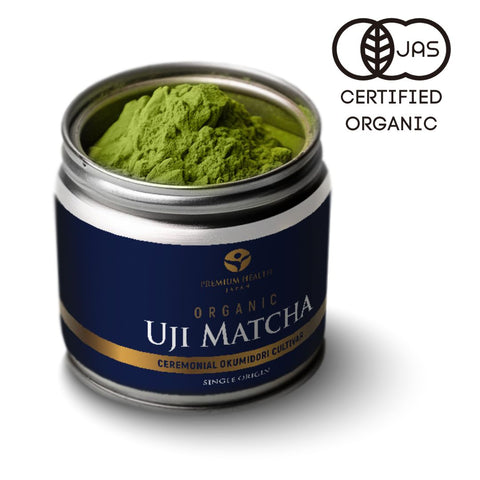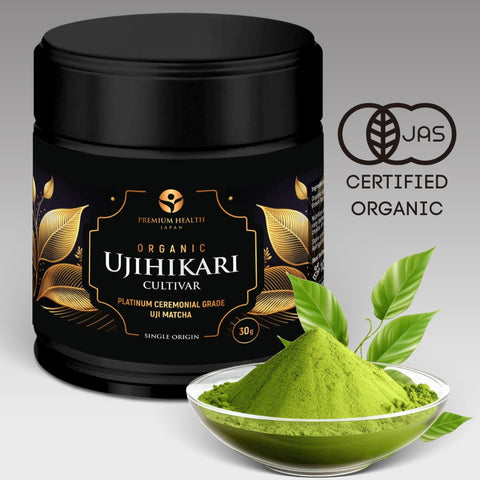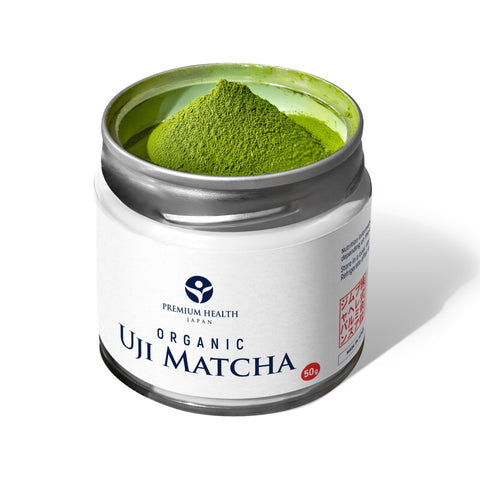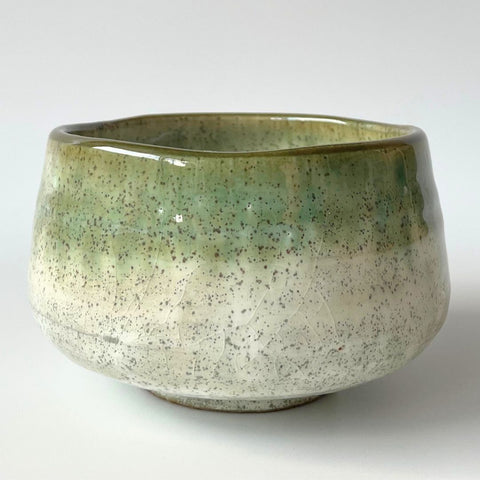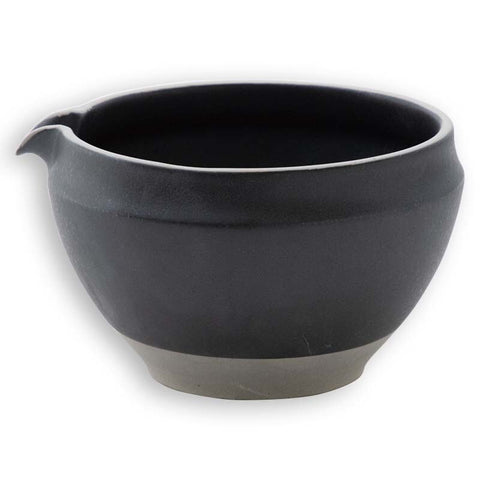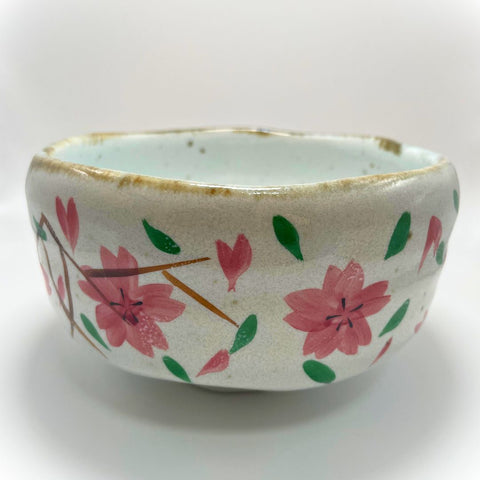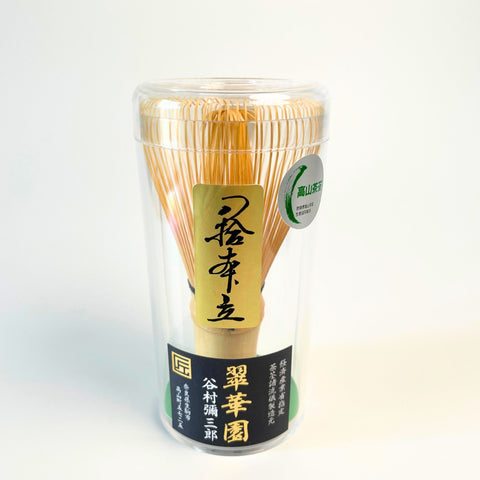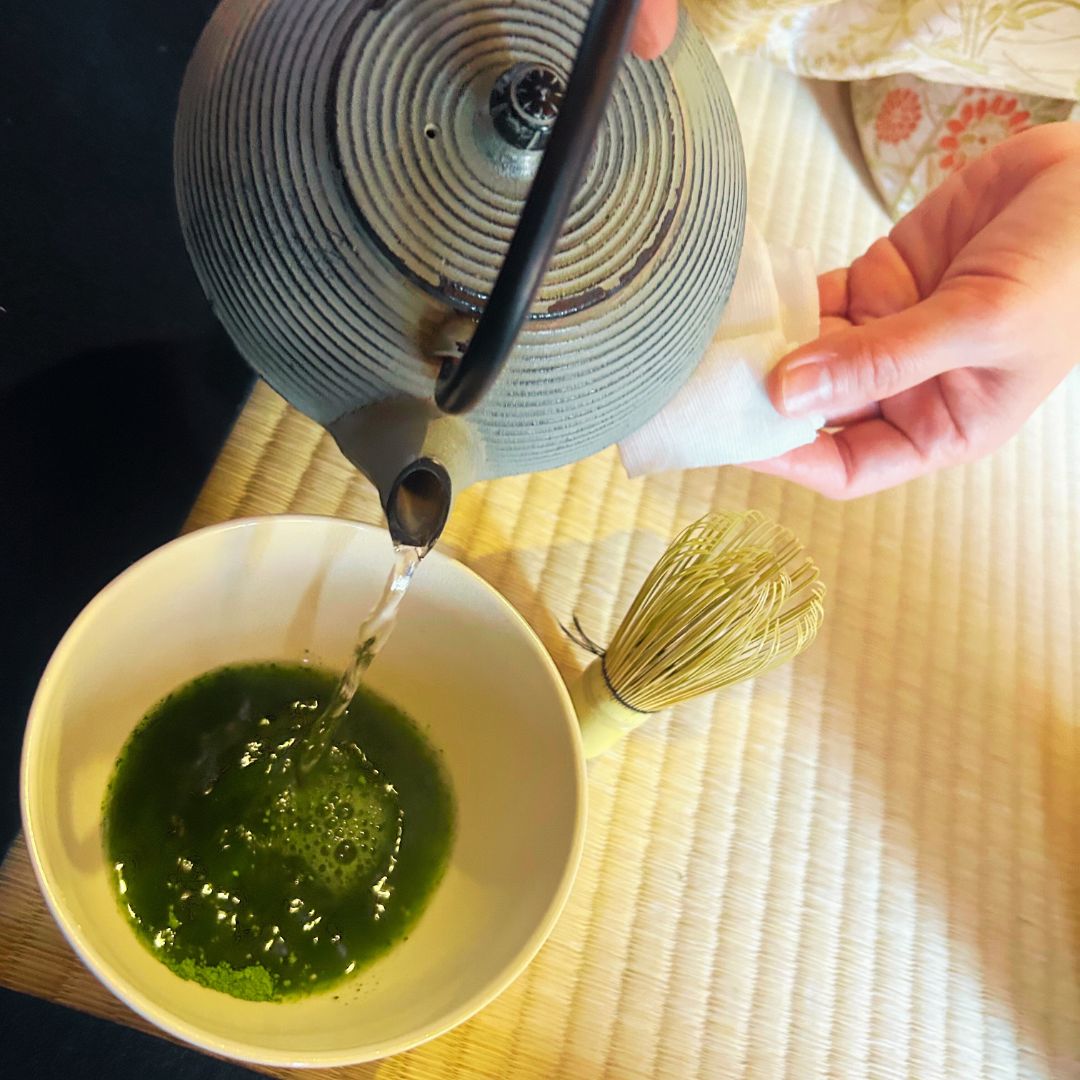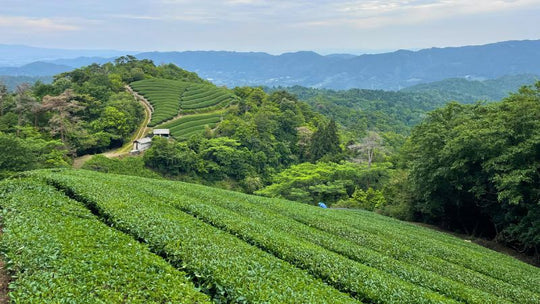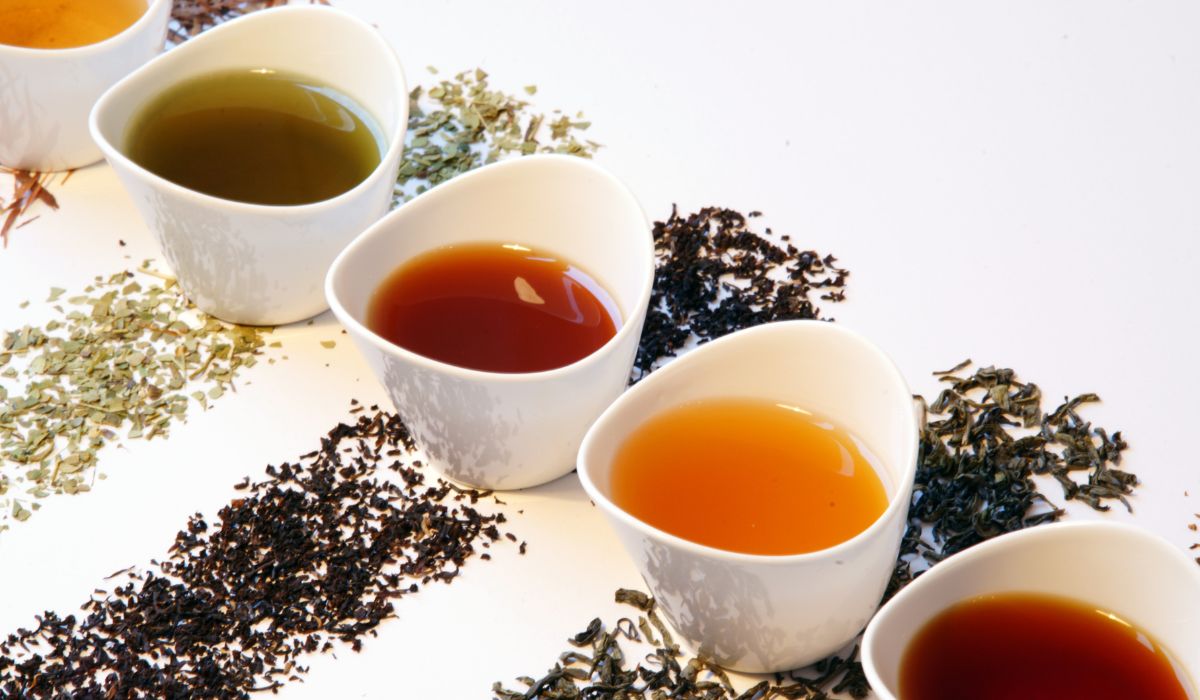
Uji Matcha
By Premium Health Japan
In a World of Blends, We Stand Apart. Experience the Purity of Single Origin, Single Cultivar Matcha
The Best Matcha Powder from Japan
Welcome to Premium Health Japan, your specialists in authentic Uji matcha. Based in Japan with a bilingual team, we connect traditional tea farms to international customers, offering exclusive Uji matcha and tea accessories.
Whether you're looking to enjoy high quality matcha or launch your own brand, we provide special access to Japan's finest tea farms.
What is Uji Matcha?
Uji Matcha is a premium green tea exclusively grown and processed in Kyoto, Japan. It is known for its rich flavor, vibrant color, and high-quality production methods.
Uji Matcha has been certified authentic by the Japan Patent Office and adheres to strict cultivation and processing standards. Its unique flavor comes from the climate and soil conditions in Kyoto.
Uji Matcha is processed using traditional methods, which help to preserve its rich taste, vibrant color, and premium quality.
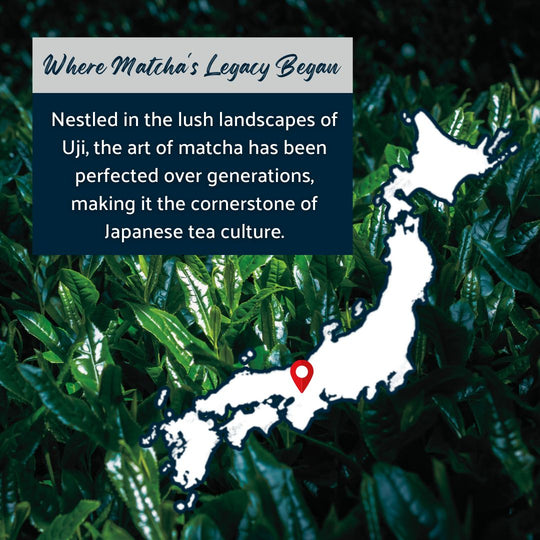
How to Brew the Perfect Matcha Tea
Simply add a small amount of room temperature water to your matcha powder and make a paste.
Then add hot water, but make sure it's not boiling. It should be 75 to 80 degrees Celsius. Any hotter and you'll make your matcha taste bitter.
Whisk in "W" and "M" patterns with a bamboo whisk until it's frothy. It takes practice, so don't be disappointed if it's not perfect on your first try!
About Us
Premium Health Japan was founded by Luke, an Australian ex-boxing coach and fitness expert who now lives in Japan. His quest to understand the health benefits of green tea during his late mother's cancer battle led him to matcha.
Our matcha is curated by Luke's hands-on approach from farm to packet, which guarantees unmatched purity and quality. Our brand is a commitment to authentic, healthful living anchored in the rich heritage of matcha.
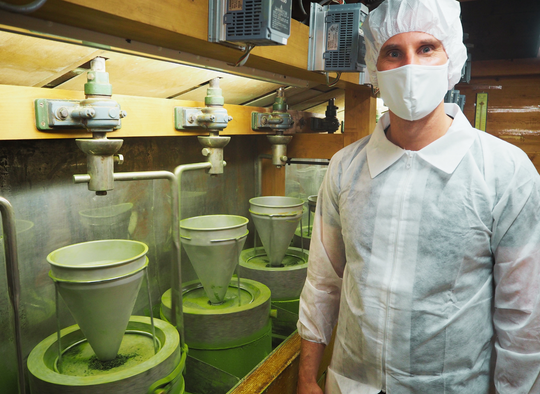
Our Founder - Luke
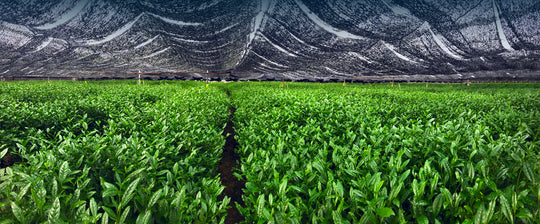
One of our tea farms in Kyoto before harvest

Our Tea Master - Kimiko
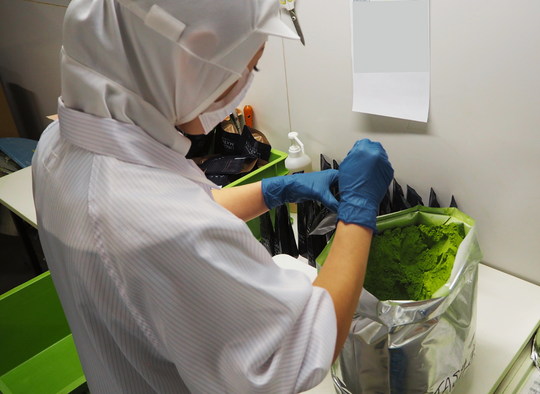
Our matcha being carefully weighed and packaged
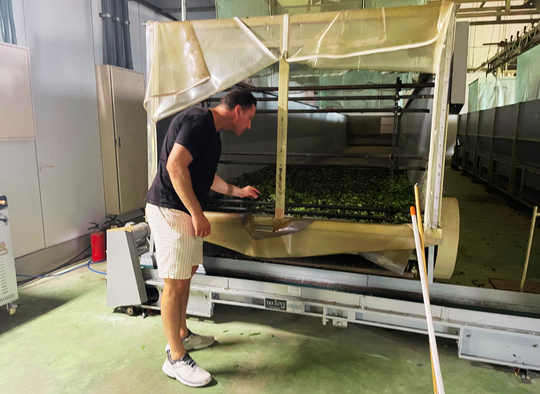
We conduct regular facility inspections
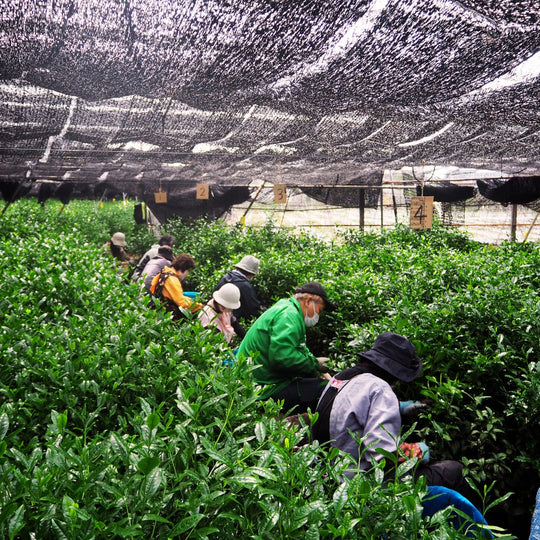
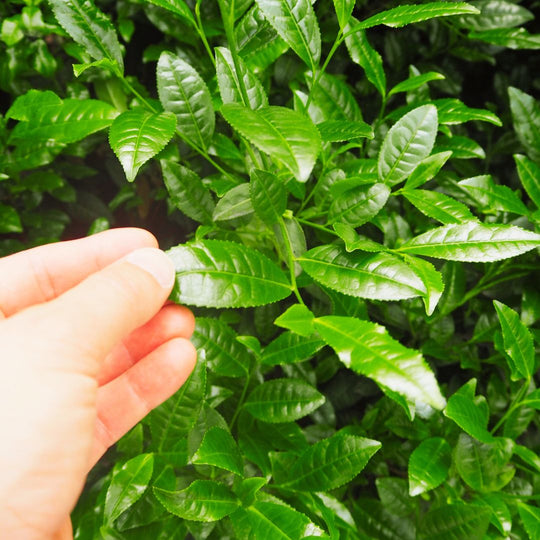
First Spring Flush Matcha Leaves
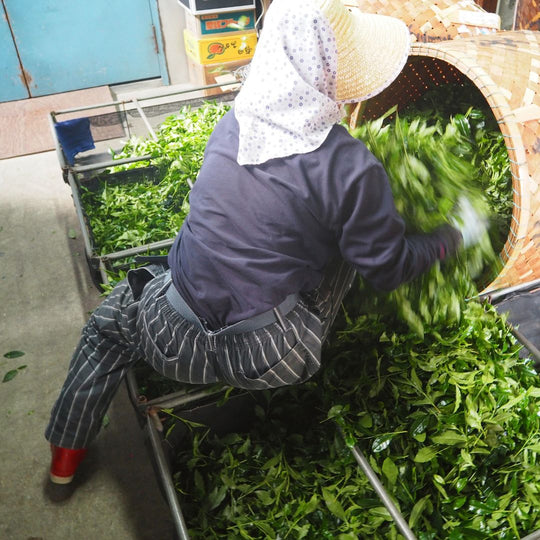
Matcha leaves are sifted for quality checking before being processed
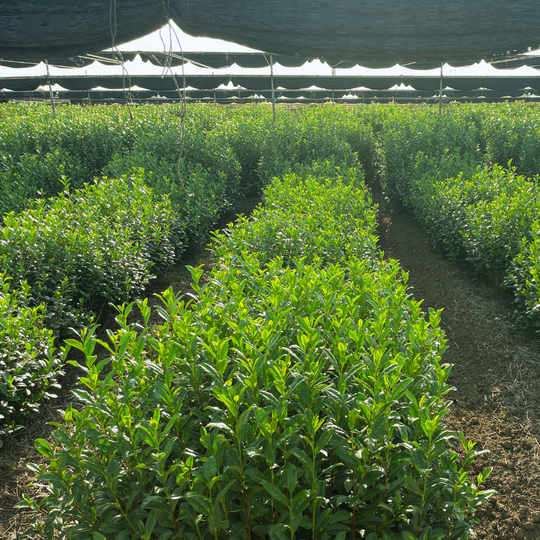
Matcha Tea Plants out of harvest season in Uji City

Our Founder - Luke

One of our tea farms in Kyoto before harvest

Our Tea Master - Kimiko

Our matcha being carefully weighed and packaged

We conduct regular facility inspections


First Spring Flush Matcha Leaves

Matcha leaves are sifted for quality checking before being processed

Matcha Tea Plants out of harvest season in Uji City
Join the Uji Matcha Community
FAQs
Matcha Shortage & Price Surge in Japan 2025 – What's Really Happening?
Matcha prices have more than doubled in 2025, and supply from Kyoto has dropped sharply. As a Japan-based matcha exporter, we break down what’s really happening—and what it means for...
What’s happening, what caused it, and what to expect next
If you’ve recently tried to buy matcha—especially high-grade ceremonial matcha—you may have noticed something unusual: rising prices, limited availability, and delayed shipments.
We’re based in Japan and work directly with tea farmers and wholesalers. Here's a clear breakdown of what’s going on and what it means for our industry and customers worldwide.
📉 Matcha Supply is Down — By a Lot

Matcha is made from tencha, a type of shaded green tea leaf. The 2025 harvest in Kyoto Prefecture, the heart of Uji matcha, saw steep production drops:
| Tea Type | 2024 Volume | 2025 Volume | Change |
|---|---|---|---|
| Uji Tencha (hand-picked) | 10,216 kg | 6,140 kg | –40% |
| First-harvest Tencha (machine-picked) | 529,960 kg | 434,521 kg | –18% |
These numbers were officially reported by the Kyoto Tea Industry Association and JA Zen-Noh Kyoto in June 2025.
💴 Prices Have More Than Doubled

With supply tight and global demand stronger than ever, prices at auction skyrocketed:
| Tea Type | 2024 Price/kg | 2025 Price/kg | Change |
|---|---|---|---|
| Uji Tencha | ¥20,024 | ¥43,330 | +116% |
| First-harvest Tencha | ¥5,402 | ¥14,541 | +169% |
These price hikes are unprecedented and have already begun to affect product pricing and availability worldwide.
🔍 What’s Driving the Shortage?
The shortage isn’t due to a single issue—it's a perfect storm:
1. Global Matcha Demand Is Booming
Health-conscious consumers are fueling demand for matcha in all forms—from traditional tea bowls to matcha lattes, smoothies, sweets, and supplements. Even the food service and cosmetic industries are using more matcha than ever before.
2. Climate & Agricultural Challenges
Japan saw unusually hot and dry spring weather in 2025. Some regions reported stress to tea plants, affecting leaf quality and yield. This is especially true in Kyoto, where traditional, non-mechanized growing methods are still common.
3. Shift in Tea Production Priorities
To meet demand, many farms are switching from producing gyokuro or sencha to tencha (the raw material for matcha). While this shift is strategic, it also reduces diversity and limits output in the short term.
4. Cost of Materials & Labor
Fuel, packaging, fertilizer, and labor costs have all gone up. Combined with the weak yen, production is more expensive than ever, especially for organic and hand-picked teas.
🗾What Does National Data Show?
Interestingly, nationwide tencha production has increased over the past decade. According to Japan’s Ministry of Agriculture, 2024 tencha output was 2.7x higher than in 2014.
But that’s only part of the story: Kyoto—home to the most prized Uji matcha—saw dramatic drops in 2025. So while the total supply across Japan is up, the best quality matcha is now in short supply.
🔮 What to Expect Going Forward
At Premium Health Japan, we’ve been fielding many questions from customers and partners around the world. Here’s what we believe you can expect:
✅ Prices Will Remain High—For Now
Tencha and matcha prices won’t return to 2022 levels anytime soon. However, some stabilization may come after the autumn harvest, or with larger spring yields in 2026.
✅ Supply Chains Are Being Adjusted
Farmers, auction houses, and buyers are all adapting. There’s more focus on improving yields, replanting tea fields, and modernizing production while maintaining quality.
✅ Matcha is Not Going Away
Despite the shock, Japan’s matcha industry is strong. Smart investment, strategic growth, and international demand will ensure that authentic matcha continues to be available, though you may need to be more selective.
💬 What We’re Doing at Premium Health Japan
We’re proud to operate directly in Japan, working face-to-face with producers. We’ve secured strong relationships with farmers, cooperatives, and millers, which means:
-
We source our tea directly from Uji-based farms, including rare, hand-picked cultivars.
-
We’ve already adjusted pricing to reflect current auction rates.
-
We minimize waste, store efficiently, and ship globally from our hubs in Japan, the USA, the EU, and Australia.
If you're a wholesale buyer or OEM partner, we can guide you through current options and expected lead times.
In Summary
| Key Issue | Details |
|---|---|
| Supply | Uji tencha down 40–60% in 2025 |
| Prices | Auction prices up 116–169% YoY |
| Drivers | Climate impact, booming demand, higher costs |
| Outlook | Supply recovery possible in 2026–2028 |
| What We Offer | Direct Kyoto sourcing, reliable distribution, complete transparency |
📌 Additional Sources
We recommend reading these non-commercial articles for more background:
Have questions about our products, OEM options, or pricing?
We’re happy to help. Contact us, and our bilingual team will respond to you.
Your 2024 Guide to the Best Loose Leaf Green Teas
Discover the best organic loose leaf green teas of 2024 with our curated guide. Experience the rich flavors, health benefits, and cultural significance of carefully selected teas. Trust our guide...
Introduction to the Best Loose Leaf Green Tea
When it comes to enjoying a cup of tea, the quality of the leaf matters as much as the ritual of brewing it. Among the scores of tea varieties, green tea holds a special place for its delicate flavors, health benefits, and the artistry behind its production. This guide will take you through the world of best loose leaf green tea, exploring not just the flavors but the culture, health benefits, and the nuances that make each leaf unique.
💡Did you know that green tea has been consumed for thousands of years and was originally used as a medicinal drink in ancient China?
Main Types of Tea (Overview)
Tea can be broadly categorized into several types based on the processing of the leaves of the Camellia sinensis plant. While black tea, oolong tea, and white tea have unique charm and benefits, green tea and herbal tea are often celebrated for their health-promoting properties.
Green Tea: Known for its fresh, delicate flavor, green tea undergoes minimal oxidation during processing. This preserves its green color and antioxidant-rich profile, making it a favorite among tea enthusiasts.
Black Tea: More oxidized than green tea, black tea offers a robust flavor and higher caffeine content. It's enjoyed hot and as iced tea, making it versatile for any season.
Oolong Tea: Oolong tea is partially oxidized, offering a complexity of flavor that falls somewhere between green and black tea. Its unique processing results in diverse flavors, from sweet and floral to rich and toasty.
White Tea: The least processed of all teas, white tea is prized for its subtlety, natural sweetness, and elegance. Its gentle flavors make it a sophisticated choice for tea lovers.
Herbal Tea: Though not made from the Camellia sinensis plant, herbal teas (like yerba mate and Moroccan mint) offer a caffeine-free alternative with various health benefits.
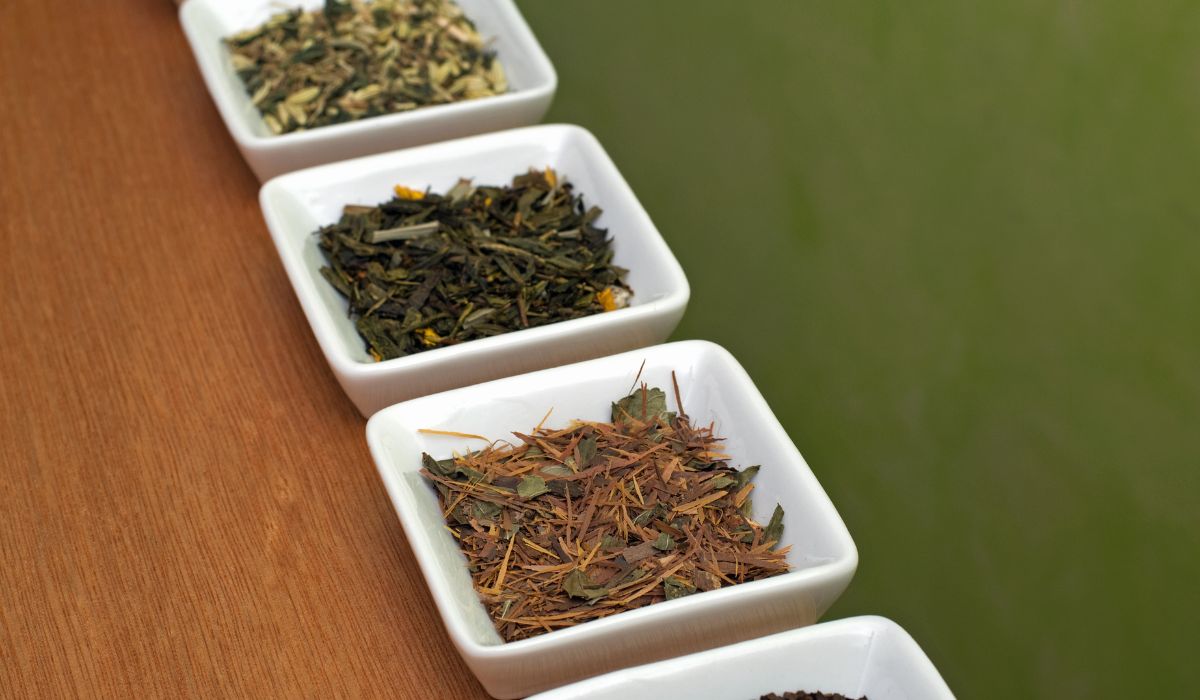
💡Oolong tea's unique flavor results from a special process that involves sun drying and oxidation before curling and twisting the leaves.
The World of Green Tea
The world of green tea is vast, with each variety offering a unique taste profile and set of benefits. From the grassy, sweet notes of Sencha to the nutty depths of Dragon Well tea, green tea varieties are as diverse as the regions they come from.
-
Japanese Green Teas: Japan is renowned for its green teas, with Sencha being the most popular. However, for those seeking the pinnacle of flavor and quality, Gyokuro stands out. Gyokuro is shaded before harvesting, which increases its chlorophyll content and gives it a rich, umami flavor.
-
Chinese Green Teas: China produces a wide range of green teas, including Chun Mee, known for its plum-like sweetness and smooth finish. Dragon Well (Longjing) tea, with its distinctive flat leaves and jade color, offers a mellow, sweet flavor that is highly sought after.
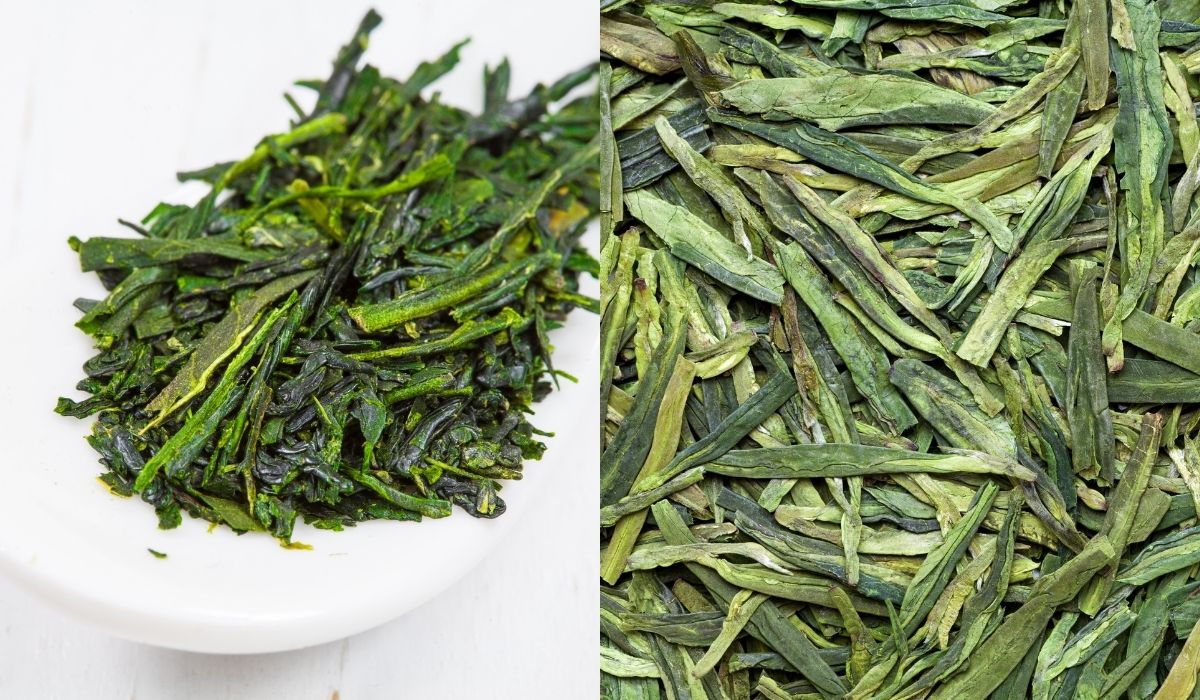
Organic Green Tea: Opting for organic tea means choosing leaves grown without industrial chemicals, ensuring a pure, natural cup. Organic green tea supports a healthy lifestyle and promotes sustainable farming practices.
Premium Loose Leaf Green Teas: The term "premium" is often associated with handpicked teas during the optimal harvest season, ensuring the highest quality and flavor. These teas, including rare and single-origin varieties, offer a full-bodied cup that is both a luxury and a sensory experience.
💡Gyokuro tea is shaded for about three weeks before harvesting, contributing to its unique flavor and higher caffeine content than other green teas.
Health Benefits of Green Tea
Green tea is not just a beverage; it's a rich source of antioxidants and compounds that profoundly affect your health. Here's how incorporating green tea into your daily routine can benefit you:
- Weight Loss: Green tea has been shown to boost metabolic rate and increase fat burning in the short term, making it a valuable ally in weight management.
- Immune System Boost: The antioxidants in green tea, particularly vitamin C and ascorbic acid, can help strengthen your immune system, making you better equipped to fight illnesses.
- Brain Function: Regular consumption of green tea may enhance brain function, improving memory, cognitive performance, and even mood.
- Blood Sugar Regulation: Green tea can help regulate glucose levels, reducing the risk of insulin spikes and diabetes.
- Good Health and Healthy Lifestyle: Beyond these specific benefits, green tea supports a healthy lifestyle, contributing to heart health, reducing the risk of cancer, and promoting longevity.
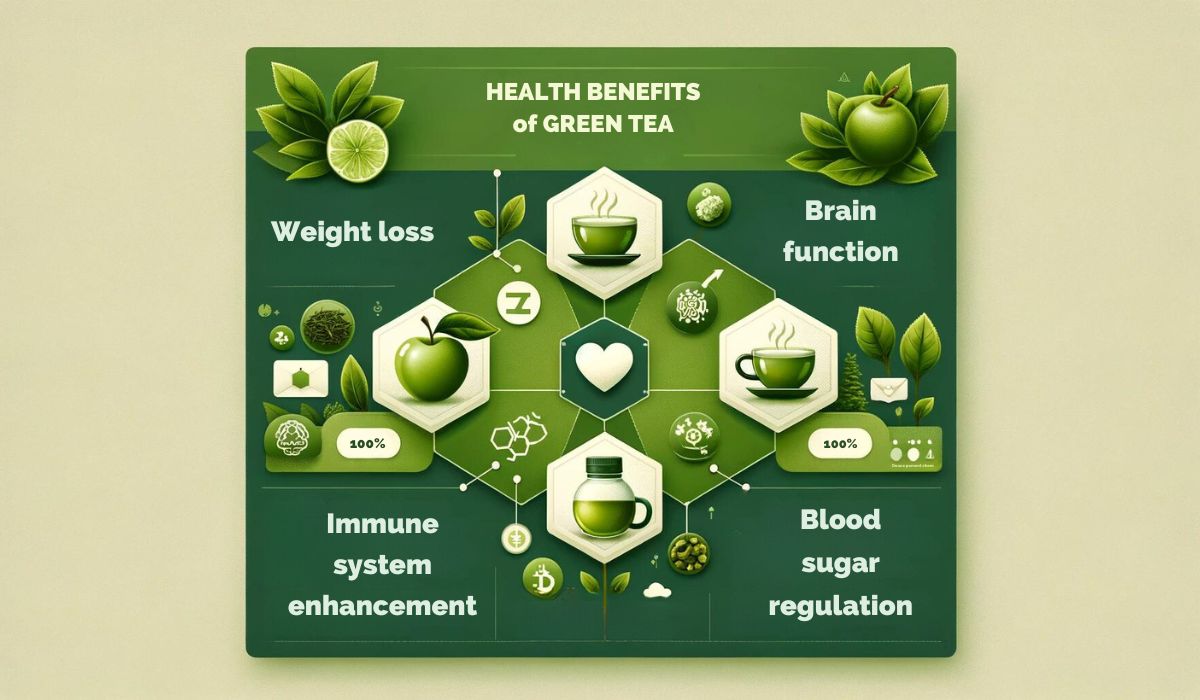
💡Did you know that green tea contains a catechin called EGCG (Epigallocatechin Gallate), known for its cancer-fighting properties?
Brewing the Perfect Cup
The art of brewing green tea is as important as the leaf itself. Here's how to ensure you get the most out of your loose leaf green tea:
- Loose Leaf vs. Tea Bags: Opting for loose leaf tea over standard tea bags can significantly enhance your tea-drinking experience. Loose leaves allow for a fuller expansion during steeping, resulting in a more complex and nuanced flavor.
- Water Temperature and Brewing Time: The ideal water temperature for green tea is between 150°F and 180°F. Boiling water can scorch the leaves, leading to a bitter taste. Steeping time should be between 2 to 3 minutes for the perfect balance of flavor.
- Tea Accessories: A French press or a dedicated tea steep allows for better water circulation around the leaves, extracting maximum flavor. Water quality can also impact the taste, so filtered or spring water is recommended.
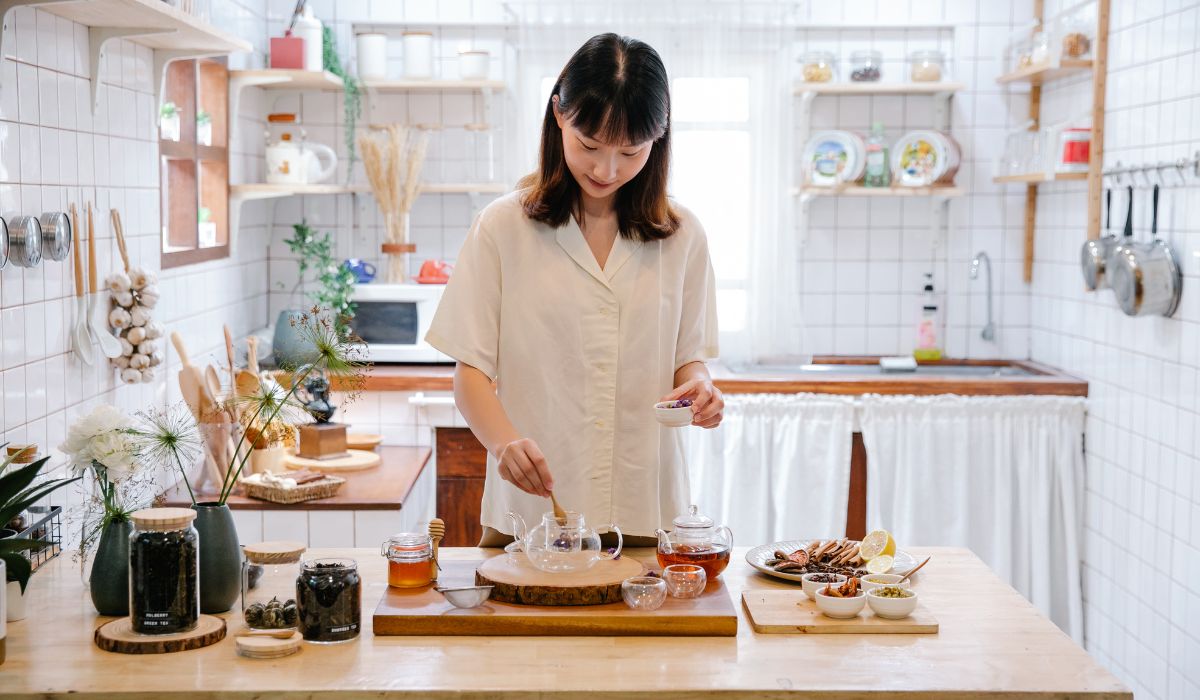
💡The term "steeping" is the process of soaking tea leaves in water to extract their flavors and nutrients, a crucial step in brewing tea.
Tea Culture and Consumption
Tea is more than a drink; it's a cultural experience that varies greatly from one region to another. Here's a glimpse into the tea culture and how it shapes our consumption:
- Tea Enthusiasts and Tea Lovers: For many, tea is a passion. Communities and forums dedicated to tea allow enthusiasts to share their love for rare teas, brewing techniques, and the latest tea accessories.
- Tea-Drinking Experience: The experience of drinking tea can be deeply personal. Some prefer the soothing warmth of hot teas, while others enjoy the refreshing briskness of iced tea. The time of day, the mood, and even the weather can influence one's choice.
- Tea Gifts and Samplers: Tea makes for a thoughtful gift, offering a taste of different cultures and flavors. Tea samplers are especially popular during the holiday season, providing a curated experience of premium and rare teas.
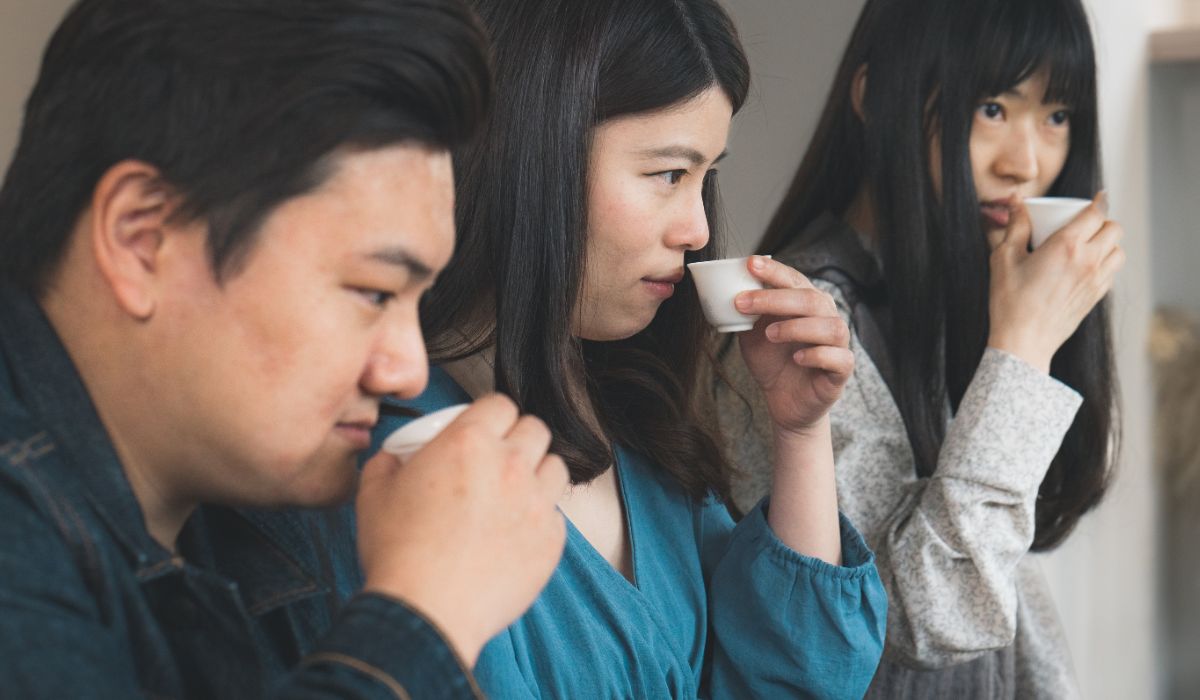
💡In Japan, the traditional tea ceremony, known as Chanoyu, or Sado, is a choreographed ritual of preparing and serving Japanese green tea, specifically matcha, focusing on aesthetics and harmony.
Purchasing and Sustainability
When buying the best loose leaf green tea, knowing where and how your tea is sourced can make all the difference in quality and impact.
-
Fair Trade and Organic Certifications: Look for certified organic and fair trade teas. These labels ensure your tea is grown without harmful pesticides and chemicals and guarantee that the farmers and workers involved are treated and compensated fairly. This commitment to ethical practices contributes to a healthier planet and a more sustainable tea industry.
-
Free Shipping and Customer Ratings: Many reputable tea suppliers offer free shipping on their products, making exploring a diverse inventory of loose teas easier and more affordable. Additionally, paying attention to customer ratings and reviews can guide you toward the best teas, as rated by fellow tea lovers. This feedback can be invaluable in finding teas with exceptional quality and flavor.
-
Diverse Inventory of Loose Teas: A good tea supplier will offer a wide range of teas, from classic favorites to rare and unique varieties. This diversity allows tea enthusiasts to explore new flavors and find teas that suit their preferences. Whether you're looking for the grassy notes of a Sencha, the sweet aroma of a Dragon Well, or the rich umami of Gyokuro, a diverse inventory ensures you'll find the perfect tea for any occasion.
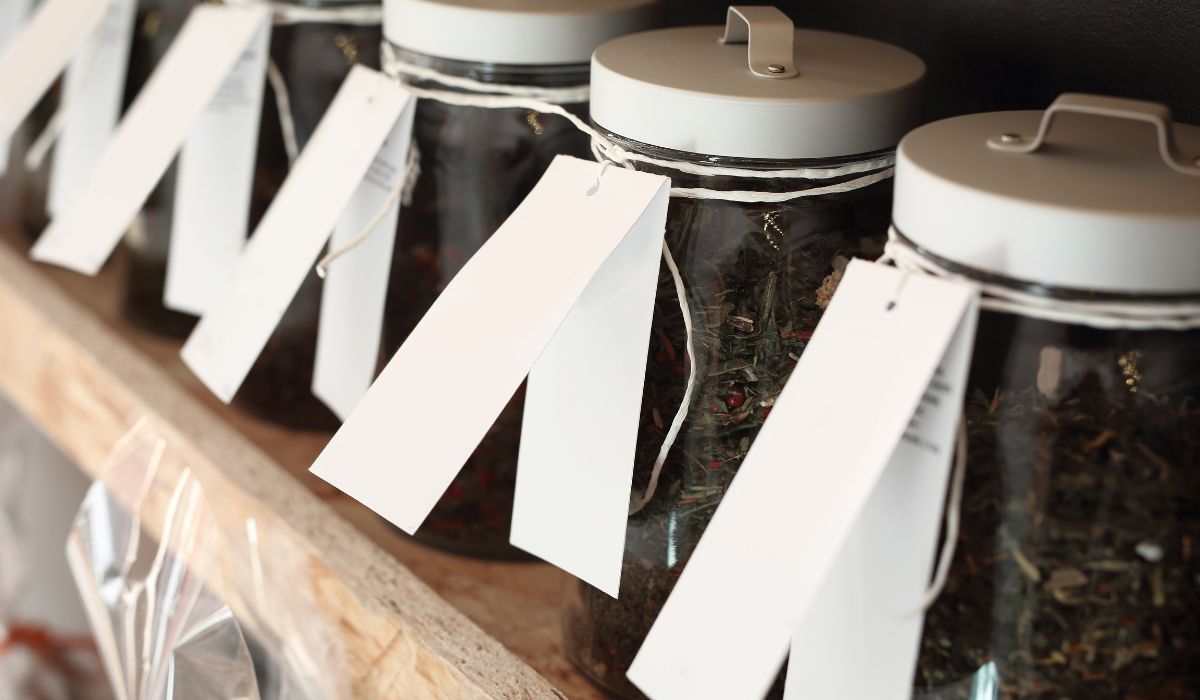
💡Fair Trade certification supports sustainable farming practices and invests in community development, ensuring that tea farmers can build a better future for themselves and their families.
Conclusion: Embracing the World of Green Tea
As we wrap up our exploration of the best loose leaf green tea, we recognize the depth and diversity this ancient beverage offers. From its health benefits and cultural significance to the artistry behind each variety, green tea stands out as a beverage of choice for many around the globe. Among the finest teas is organic Uji matcha, a product that embodies the pinnacle of green tea quality and tradition.
Organic Uji Matcha: Grown in the revered tea fields of Uji, Japan, this matcha is not just a tea; it's a cultural heritage. The meticulous care in cultivation and processing, adhering to strict organic standards, ensures that each cup offers the rich, smooth, and umami-packed flavor that matcha is famous for. By choosing organic Uji matcha, you're indulging in a premium tea experience and supporting sustainable agriculture and ethical farming practices.
Whether you're a seasoned tea enthusiast or a newcomer eager to explore, integrating organic Uji matcha into your routine is a step toward a healthier, more mindful lifestyle. Its versatility, whether traditionally whisked in a bowl or as an ingredient in lattes and smoothies, makes it a perfect ambassador for green tea.
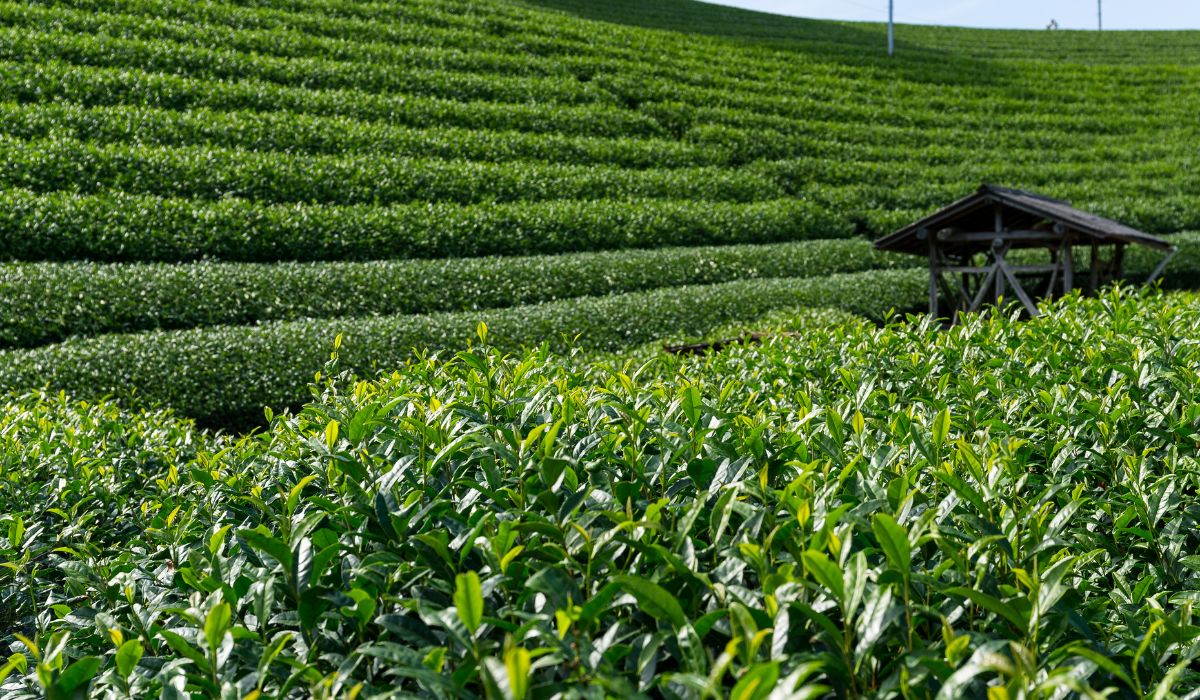
💡Uji, a region in Kyoto, Japan, is renowned for producing the highest quality matcha thanks to its optimal climate, rich soil, and centuries-old tea cultivation techniques.
Caffeine in Matcha Green Tea: What You Need to Know
Explore the fascinating world of matcha green tea through this informative article. Discover its unique history, shading process, and health advantages. Get a comprehensive understanding of matcha's caffeine levels and...

Introduction
Matcha green tea is a popular and healthy beverage consumed in Japan and other parts of the world for centuries. Green tea leaves are ground into a fine powder and whisked into hot water to create a frothy, refreshing drink. Matcha is known for its unique flavor, vibrant green color, and numerous health benefits, including its high concentration of antioxidants and amino acids.
Understanding Matcha and Its Roots
The Camellia Sinensis Plant
The tea plant, Camellia sinensis, is an evergreen shrub native to China and Southeast Asia. It is the source of all true teas, including green, black, and white tea. The tea plant is grown in various climates and soil conditions. Yet, it thrives in moderate temperatures, high humidity, and well-drained soil.

Types of Green Tea: An Overview
Green tea is known for its health benefits and unique taste. There are various types of green tea, including sencha, gyokuro, hojicha, and, of course, matcha, each with unique characteristics.
- Sencha is a delicate and refreshing green tea made from high-quality tea leaves that are steamed, rolled, and dried to produce a smooth and mild taste.
- Gyokuro is a high-quality Japanese green tea grown in the shade, resulting in a sweet and less bitter taste than other green teas.
- Hojicha is a Japanese green tea roasted over charcoal, giving it a nutty and smoky flavor.
- Matcha is made from finely ground green tea leaves and is known for its vibrant green color, earthy flavor, and numerous health benefits.
All types of green tea are packed with antioxidants and are considered a healthy beverage choice.
Shading vs. sun exposure on the tea plants
Regular green tea, such as sencha and bancha, is typically grown under full sunlight. The plants are commonly cultivated in vast fields and exposed to ample sunlight, allowing the tea leaves to develop and produce a robust flavor.
However, matcha and gyokuro are different. Tea plants are shaded up to one month before harvest to produce these green tea varieties. This shading process, known as "tana," involves covering the tea plants with a cloth or netting, which reduces the amount of sunlight that reaches the leaves.
The restriction of sunlight exposure causes the tea leaves to grow bigger and thinner. It also changes the flavor and texture of the tea leaves, making them sweeter, softer, and more delicate. Shading also increases the levels of chlorophyll and amino acids in the leaves, resulting in a brighter green color and a more intense umami flavor.

Green Tea Powder vs Matcha
Green tea powder and matcha are often confused, but there is a key difference between the two. Green tea powder is produced by grinding green tea leaves into fine powder. Green tea is grown under direct sunlight for the entire duration of its cultivation. The sunlight exposure enables the tea leaves to increase their catechins, or antioxidants, which gives green tea its distinctly bitter flavor.
Matcha, a form of green tea powder, is made from tea leaves shaded from sunlight for several weeks before harvest. Restricting sunlight increases the level of l-theanine amino acid in the tea leaves, giving matcha its distinctive umami fragrance and flavor. It also reduces the bitterness and raises the levels of chlorophyll, among other beneficial compounds.
These unique production methods give matcha its characteristic green color and richer flavor when compared to green tea powder. Additionally, matcha is traditionally used in Japanese tea ceremonies, while green tea powder is more commonly utilized in cooking and baking.
Tea Bags vs. Green Tea Powder
Tea bags and green tea powder are two popular ways to enjoy green tea. Tea bags are convenient and easy to use but often contain lower-quality tea leaves that have been ground into small fragments. Green tea powder is created by grinding whole tea leaves into a fine powder, resulting in a more complex flavor and higher concentration of beneficial compounds.
Benefits of Matcha and Green Tea

Heart Health and Powerful Antioxidants in Matcha
Matcha contains high concentrations of powerful antioxidants that are beneficial for heart health. These antioxidants, including epigallocatechin gallate (EGCG), can help reduce inflammation and lower cholesterol levels, reducing the risk of heart disease.
Additionally, matcha is rich in catechins, which have been shown to improve blood flow and lower blood pressure. Incorporating matcha into your diet makes providing your body with these heart-healthy benefits easy.
Weight Loss and Blood Sugar Levels: The Green Tea Effect
Studies have shown that green tea can positively impact weight management and blood sugar regulation. The active compounds in green tea, particularly catechins, may help to increase metabolism and reduce body fat.
Green tea can also improve insulin sensitivity and reduce glucose absorption, lowering blood sugar levels. These findings suggest that incorporating green tea into a healthy diet and exercise routine supports weight loss and blood sugar control.
Vitamin C and Immune Support in Matcha
Matcha is an excellent source of vitamin C, an important antioxidant that can help boost the immune system. Vitamin C is essential for the production of collagen. This protein is vital for healthy skin, bones, and connective tissues. It also helps boost the body's ability to absorb iron, which is essential for healthy blood cells.

Balancing Caffeine with L-Theanine for Improved Cognitive Function
Matcha is also high in the amino acid L-theanine, which promotes relaxation and reduces stress. This amino acid works in synergy with caffeine to foster a state of calm alertness, which can improve cognitive function and mental clarity. L-theanine also enhances sleep quality and reduces symptoms of anxiety and depression.
Caffeine Content and Its Impact
Caffeine Content of Matcha vs. Regular Green Tea
Matcha is a type of green tea known for its high caffeine content. It contains between 18.9 and 44.4 milligrams of caffeine per gram of matcha powder, higher than most other types of green tea. However, the caffeine in matcha is released more slowly into the bloodstream than the caffeine in coffee or energy drinks, which can lead to a more sustained and balanced energy boost.
Comparing Caffeine Levels: Matcha, Coffee Beans, and Energy Drinks
Matcha contains less caffeine than coffee beans, which have 10.0–12.0 mg of caffeine per gram of beans. However, the caffeine in matcha is more bioavailable than coffee, so the body absorbs it more quickly and efficiently. On the other hand, energy drinks can contain up to 300mg of caffeine per serving, a significantly higher caffeine content than matcha or coffee.

Effects of Caffeine on the Central Nervous System
Caffeine is a central nervous system stimulant that can improve cognitive function, increase alertness, and reduce fatigue. It works by blocking the action of adenosine, a neurotransmitter that promotes sleep and relaxation. However, caffeine can also cause side effects such as nervousness, jitteriness, and insomnia, especially when consumed in large amounts.
Blood Pressure and Caffeine: The Matcha Connection
Caffeine can increase blood pressure in some people, especially those with high blood pressure or cardiovascular disease. However, the effect of caffeine on blood pressure can vary depending on the individual and the amount consumed. Like other green teas, matcha contains compounds that lower blood pressure, which can help counteract the effects of caffeine.
Matcha in Daily Life
Incorporating Matcha into Your Daily Routine for Optimal Health
Incorporating matcha and green tea into your daily routine can have numerous health benefits. Aim to consume at least one cup of green tea or matcha daily to reap the health benefits, but be mindful of caffeine intake, especially if you are sensitive to it. While green tea and matcha are healthy beverages, they should not be relied on as a cure-all for health issues. A balanced diet, regular exercise, and healthy lifestyle choices remain the foundation of good health.
Lower Grades of Matcha: Understanding the Differences
Matcha is available in different grades, each with its unique flavor, texture, and price point. The highest grades of matcha are made from the youngest and most delicate tea leaves, harvested from shaded tea crops, and ground into a fine powder. Lower grades of matcha are made from older and coarser tea leaves, which are less expensive but less flavorful and nutritious.
Matcha vs. Coffee

Is Matcha Better than Coffee for Anxiety?
Matcha's high concentration of L-theanine has been shown to have a calming effect on both body and mind. This amino acid works in synergy with caffeine to promote a state of calm alertness, which can help reduce anxiety and stress symptoms. Coffee, on the other hand, can increase anxiety and nervousness in some people, especially when consumed in large amounts.
Matcha vs. Coffee: A Caffeine Showdown
Matcha contains less caffeine than coffee, but it also contains other compounds that can enhance the effects of caffeine and promote more sustained and balanced energy levels. The caffeine in coffee is absorbed more quickly and efficiently by the body, leading to a more intense caffeine boost followed by a caffeine crash.
FAQs:
1. Is Matcha Tea High in Caffeine?
Yes, matcha's caffeine content is high. It contains between 18.9 and 44.4 mg caffeine per gram of tea, higher than most other types of green tea.
2. Is Matcha Stronger than Coffee?
No, matcha is not stronger than coffee in terms of caffeine content. However, the caffeine in matcha is more bioavailable than coffee, so the body absorbs it more quickly and efficiently.
3. How Much Caffeine is in Green Tea vs Coffee?
Green tea contains less caffeine than coffee, but it also contains other compounds that can enhance the effects of caffeine and promote a more sustained and balanced energy boost.
4. Is Matcha Better than Coffee for Anxiety?
Matcha's high concentration of L-theanine has a calming effect on the body and mind. Coffee, on the other hand, can increase anxiety and nervousness in some people, especially when consumed in large amounts.
5. How Much Matcha is Safe Per Day?
Most experts recommend consuming no more than 2-3 cups of matcha daily, or approximately 200-300mg of caffeine.
6. Will Matcha Keep Me Awake?
Like other sources of caffeine, matcha can help promote alertness and reduce fatigue. However, consuming too much caffeine can also cause side effects such as nervousness, jitteriness, and insomnia. Consuming matcha in moderation and being mindful of your caffeine intake is essential.

Conclusion
Matcha green tea is a healthy and delicious beverage enjoyed for centuries. It is rich in antioxidants, catechins, and other beneficial compounds that can promote health and wellness.
Matcha also contains caffeine, which can help to promote alertness and reduce fatigue. Consuming matcha in moderation is important, and being mindful of caffeine intake is necessary. With its unique flavor, vibrant green color, and numerous health benefits, matcha is a beverage everyone should try at least once.


